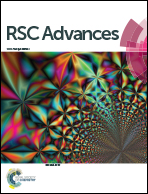Gel-polymer electrolytes based on polyurethane ionomers for lithium power sources
Abstract
Polyurethanes based on the aminoethers of ortho-phosphoric acid and polyisocyanates of an aliphatic nature were studied as a substrate for the preparation of new polymer electrolyte. The conductivity of polyurethane ionomer samples obtained using the optimal amount of aliphatic polyisocyanates and after keeping them in a 1 M LiBF4 solution in γ-butyrolactone reaches 0.62 mS cm−1. It has been established that the transport of positively charged ions through the polymer matrix is due to the formation of clusters of phosphate ions and their association into the conducting channels. The introduction of carboxylate ions into the conducting channels by modifying the aminoethers of ortho-phosphoric acid with phthalic anhydride leads to an increase in their size and rise in the mobility of cations. As a result, the conductivity of polyurethane gel electrolytes increased to 2.1 mS cm−1.



 Please wait while we load your content...
Please wait while we load your content...